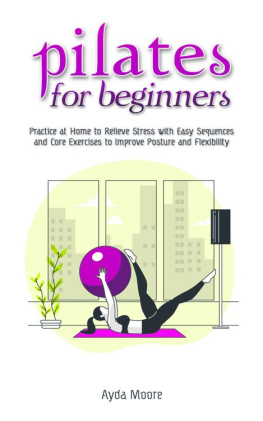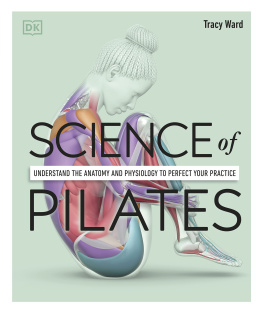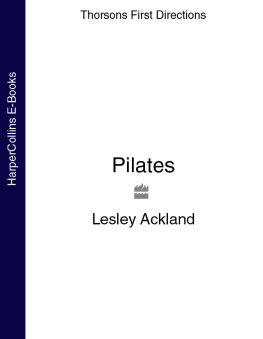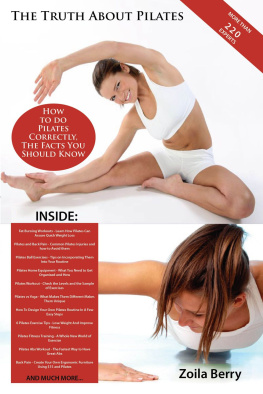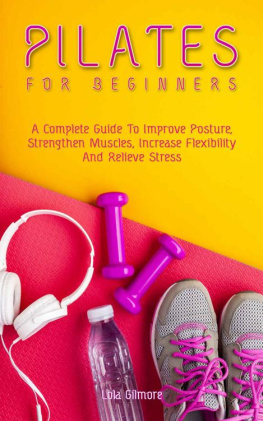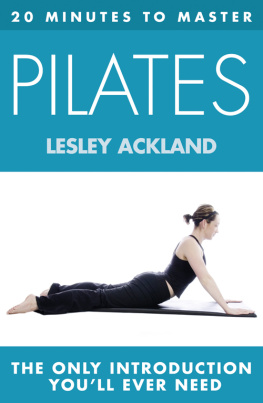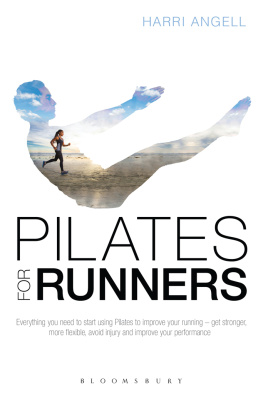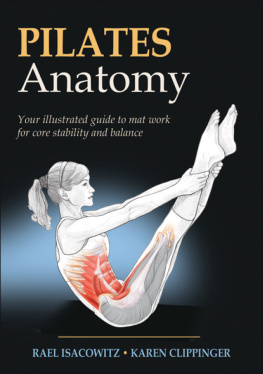Practice at Home to Relieve Stress with Easy Sequences and Core Exercises to Improve Posture and Flexibility
All rights reserved.
This document is geared towards providing exact and reliable information with regards to the topic and issue covered. The publication is sold with the idea that the publisher is not required to render accounting, officially permitted, or otherwise, qualified services. If advice is necessary, legal or professional, a practiced individual in the profession should be ordered. From a Declaration of Principles which was accepted and approved equally by a Committee of the American Bar Association and a Committee of Publishers and Associations. In no way is it legal to reproduce, duplicate, or transmit any part of this document in either electronic means or in printed format. Recording of this publication is strictly prohibited and any storage of this document is not allowed unless with written permission from the publisher. All rights reserved. The information provided herein is stated to be truthful and consistent, in that any liability, in terms of inattention or otherwise, by any usage or abuse of any policies, processes, or directions contained within is the solitary and utter responsibility of the recipient reader. Under no circumstances will any legal responsibility or blame be held against the publisher for any reparation, damages, or monetary loss due to the information herein, either directly or indirectly. Respective authors own all copyrights not held by the publisher. The information herein is offered for informational purposes solely, and is universal as so. The presentation of the information is without contract or any type of guarantee assurance. The trademarks that are used are without any consent, and the publication of the trademark is without permission or backing by the trademark owner. All trademarks and brands within this book are for clarifying purposes only and are the owned by the owners themselves, not affiliated with this document. the owners themselves, not affiliated with this document.
INTRODUCTION
It's important to note that the name, Pilate, is named after the founder, Joseph Pilates, who was born in Germany at the end of the 19th century. His health was fragile because of a thorax malformation, and he dedicated his life to improving his physical condition. It worked for him, and in many areas, he was an accomplished sportsman.
Pilates is an exercise that builds muscle strength and is very popular in the United States. Recently it has appeared in France, where classes are held in sports clubs, and specialist facilities are being decided to open to meet the demand from an increasing number of fans. Why? Because Pilates is not just a session about gymnastics. It takes a particular path, combining muscular work with self-centering. It's another way of looking at the effort, following the philosophy of mentally mastering the body.
To name the most famous ones, it is practiced on the floor, or on special machines such as the Reformer, the Cadillac, and the Wunda Chair.
Machines Pilates. Must not be put off by their unattractive appearance. They are not machines for torture, and you need not be an acrobat to use them. They 're fun and offer an extensive, scalable way to work with the body.
Pilates on floor. The floor Pilates method is now a complete sequence that can be implemented at different difficulty stages. The simplicity of the floor exercises (this is their advantage over the machines) means that, once you are familiar with the method, you can practice them anywhere using just one mat. Remember this golden rule; however: each level corresponds to an increase in effort that you must follow. While some exercises might seem basic, mastering them and then practice them regularly was nonetheless essential.
Pilates Accessories
Floor Pilates also utilizes accessories like the disk, rubber band, and big or small ball to make the movements tougher and more fun. We have chosen to speak about the last two of our demonstration.
The little ball: this is often placed between the knees or ankles for the inner thighs to work. Held between the knees, it is not essential but offers the benefit of toning the muscles of the adductor in an exercise designed to increase spine awareness.
The huge ball or Pilates ball: this is used to support part of the body, to improve movement control, or to check the balance as unstable support. For a more in-depth workout, it requires an additional effort from the stabilizing muscles.
Pilates' ability to strengthen the core, sculpt long, thin legs, and increase strength and flexibility has long been praised. Since the 1930s, professional dancers have been using Pilates to maintain peak performance and prevent injury. Pilates became popular among celebrities in the late ' 80s for increasing strength without muscle mass. Yet a common misconception, despite its popularity with actors and dancers, is that only people who are already-fit can do Pilates.
This is totally not true! Pilates can help anyone, of any age and fitness level, make lasting changes in their posture, core strength, flexibility, and overall fitness when practiced properly. Originally, Joseph Pilates called his method "Contrology"the analysis of control because he claimed that the activities involved total power of the mind, body, and soul. "Contrology" has become synonymous with "Pilates" over time as its disciples and students recommended the practice to others. It was only in the 1980s, more than 10 years after his death in 1967, that the name of his system transition has become simply "Pilates."
The early disciples of Pilates diligently preserved his method, and the practice is often referred to as "classical Pilates." Over time, Pilates practitioners also introduced slight modifications or adjustments to classical Pilates to integrate current understanding of biomechanics (the anatomical movement of the body). As practitioners and teachers, we support the classical system of Joseph Pilates but have always recognized the need for reform. Every body is different, so each individual may need to do slightly varying Pilates exercises. All through this book, you can find many of our modified exercises.
We first discovered Pilates on an international tour, while dancing. We were in desperate need of a plan for strengthening and maintaining that we could do in hotel rooms, backstage, or wherever! Any night, doing eight shows a week, then staying on a bus or in another hotel room, causes havoc on the body. But once we started practicing Pilates, we felt stronger and healthier in our bodies. Pilates very quickly improved our core strength and joint mobility, which held us safe from injury throughout our dancing careers and even later, as Radio City Rockettes, dancing on a steel stage!
Following our years of dance, we continued to do Pilates while graduating from Columbia University with degrees in International Economic Policy. Soon we realized that we could combine our passion for movement and Pilates with our business skills, and the seed was planted for our Manhattan studio, Pilates on Fifth. We opened it in the year 2000, and we are now thriving many years later!
We've seen countless people at our studio, turning their bodies and living with Pilates. After childbirth, many women turn to Pilates, as it helps to restore the connection between the brain and body to the abdominal muscles, especially after a C section. One of our male clients (who admitted that he took Pilates lessons only to appease his wife) was shocked to see how much his range of motion improved in spinal rotation and shoulder mobility, which greatly improved his golf game. An older female client still brags about rising an inch in her 70s despite strengthening the deep postural muscles that support the spine. Clients routinely tell us that, thanks to Pilates, they 're stronger now than they were 5 to 10 years ago.

